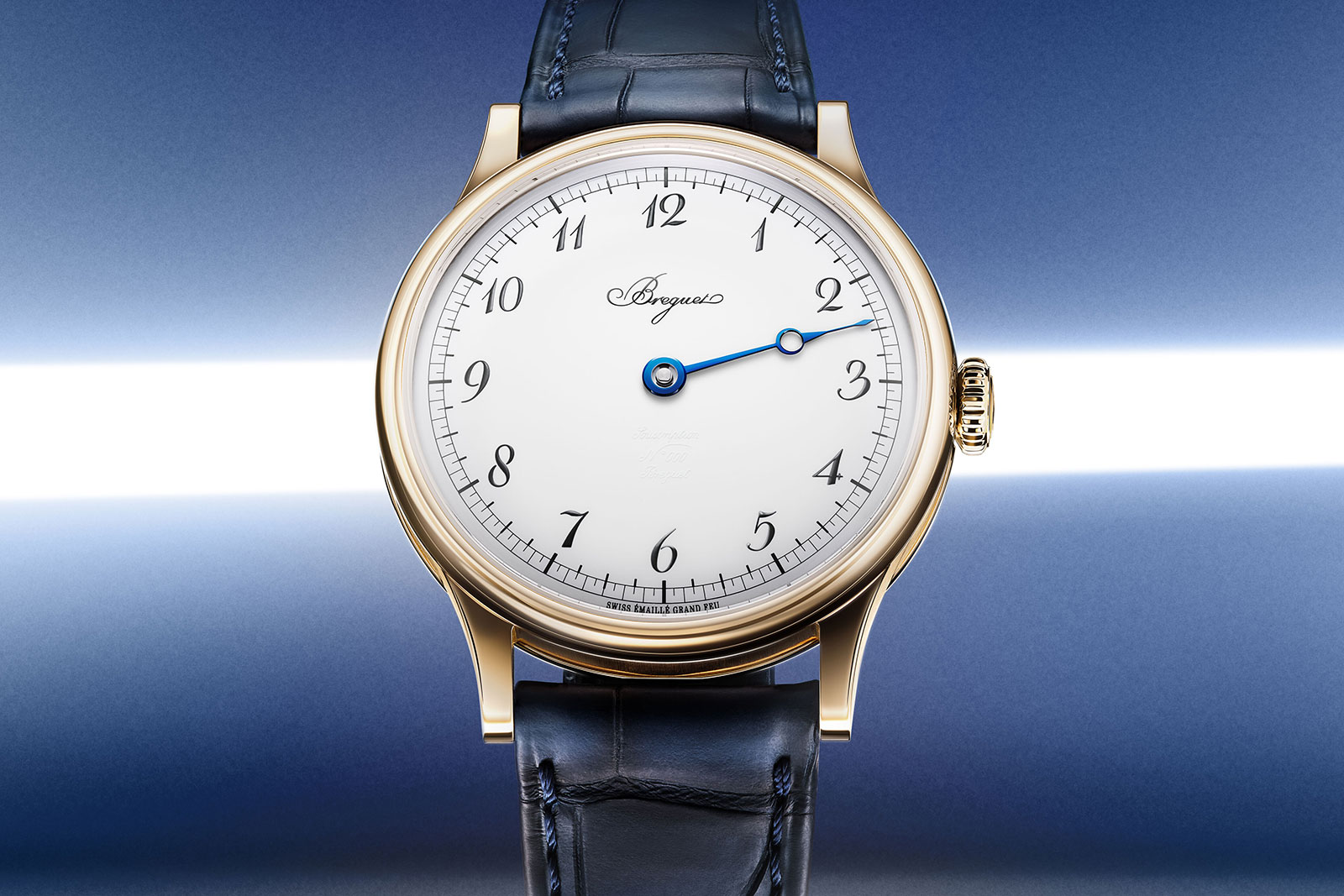Breguet Turns to Tradition with the Classique Souscription
Classically inspired with a twist.
The opening salvo in Breguet’s 250th anniversary has just been revealed: the Classique Souscription 2025BH. Although typically Breguet in style, the watch is a novel combination of elements, at least by the conventions of Breguet, a traditionally staid brand.
Presented in a case of the new design made of a gold alloy of a new formula, it’s a wristwatch inspired by the one-handed souscription pocket watches of the 18th and 19th centuries. The fired enamel dial replicates that of the pocket watch, while inside is the VS00, a calibre that is descended from the movement of the La Tradition.
Initial thoughts
As storied a brand as it is, Breguet certainly has a lot to live up to for its 250th anniversary. I expect more to come from Breguet in the coming months, but the Classique Souscription is a strong start, though a little pricey.
It’s essentially an elaborately executed time-only watch, precisely the sort of watch that is popular now when made by independent watchmakers, but big brands face more scepticism with such timepieces.
The VS00
Though it might seem typical Breguet on its face, the Classique Souscription is an unusual proposition; it’s inspired by various elements from across Breguet’s history, some several centuries apart. The dial and movement are inspired by a 19th century pocket watch, while the case comes much later. But everything works well and the whole manages to look like a Breguet.
Traditionalists might mourn the departure from familiar elements like the fluted case band, but the new (old) look is refreshing. Granted, the new case is simpler to produce than the classic version with soldered lugs, but I think the new look is a good thing, especially since it’s both appealing and rooted in history.
The watch is rooted in history is more than just aesthetics – appropriately so. The metal alloy hairspring, for example, is a surprise given Breguet’s widespread use of silicon hairsprings. Also notable are the artisanal touches, especially since Breguet is a large brand producing watches on an industrial scale. These include the hand guilloche on the case back and pantograph-engraved “secret” signature on the dial.
At a little under US$49,000, the Classique Souscription seems a little pricey on its face, but then again the price index for the luxury watch industry is at an all time high. It costs about the same as the recent Patek Philippe Calatrava ref. 6196P, and about half as much as time-only watches by artisanal and “artisanal” independent watchmakers. In that context, the Classique Souscription isn’t all that bad in terms of value, though it could be better.
The Souscription employs a Nivachron hairspring with overcoil
Pocket watch inspired but not quite
The Classique Souscription takes after the souscription pocket watch that Abraham-Louis Breguet devised around 1796. Equipped with a single hand, these entry-level watches were sold on a “subscription” basis – clients a quarter of the total price in advance, giving Breguet the capital necessary to produce the watches. The watches were bestsellers; according to Breguet, some 700 were produced over three decades.
The modern-day Souscription is decidedly less entry level. The front is almost a remake of the original pocket watch. The dial is domed and grand feu enamel dial, while the single hand is heat-blued steel and curved by hand to match the surface of the dial.
More unusual is the case that is in “Breguet” gold. It’s a new, proprietary alloy according to Breguet, one that’s composed of gold, silver, copper, and palladium, a formula that implies it’s basically a type of rose gold. Even more unusual than the alloy is the case design, which is a one-piece, stamped affair that looks mid-20th century. It’s simpler in construction than Breguet’s signature case with a fluted band and welded lugs, but complements the overall look well.
Measuring 40 mm by 10.8 mm, the case is moderate in size by modern standards, though perhaps larger than the design would imply. That said, the movement is a good fit for the case, indicating the case diameter is more or less correct.
The VS00 calibre inside is clearly evolved from the cal. 505/507 of the La Tradition, retaining the layout that is in turn based on the souscription pocket watch with the characteristic central barrel and stepped gears of the going train.
Manually wound with a 96-hour power reserve, the VS00 has gilt bridges plated in Breguet gold and sandblasted for a frosted finish. Unlike Tradition models that are equipped with silicon hairsprings, the VS00 takes a more traditional approach with a hairspring of Nivachron, an alloy that is less susceptible to magnetism.
The barrel ratchet wheel is engraved with the words of A.-L. Breguet, reproducing his handwriting
Though clearly a high-quality, artisanal-industrial movement like Breguet’s other calibres, the VV00 has an artisanal element, namely the hand-engraving on the base plate.
This is echoed by the rim of the case back that’s decorated with a wavy guilloche christened Quai de l’Horloge, after the street where A.-L. Breguet’s Paris workshop was located. Naturally, the engine turning is done on a hand-operated rose engine.
The final bit of the watch that’s a nod to Breguet’s history is the box, which is covered in red leather and instantly evokes boxes of the early- to mid-20th century.
Key facts and price
Breguet Classique Souscription 2025
Ref. 2025BH/28/9W6
Diameter: 40 mm
Height: 10.8 mm
Material: 18k “Breguet” gold
Crystal: Sapphire
Water resistance: 30 m
Movement: VS00
Functions: Hours
Winding: Manual wind
Frequency: 21,600 beats per hour (3 Hz)
Power reserve: 96 hours
Strap: Alligator strap with pin buckle
Limited edition: No
Availability: First availability at boutiques, but also at retailers
Price: US$48,700; CHF45,000
For more information, visit Breguet.com.
Back to top.